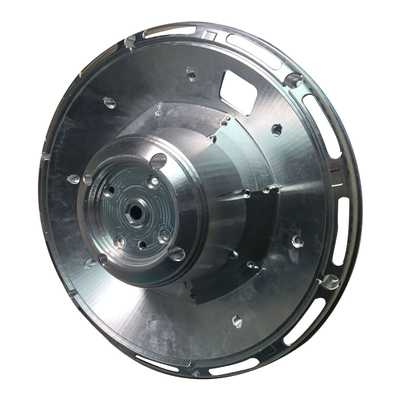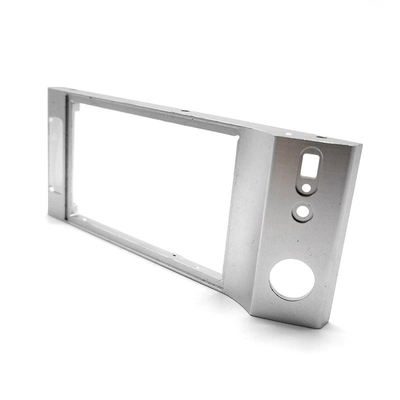How to Mill Small Metal Parts

Milling is a fundamental machining process widely used in manufacturing and engineering to produce precise metal components. It involves the removal of material from a workpiece through the use of rotating cutting tools. This article explores the techniques, tools, and considerations for milling small metal parts, highlighting the benefits and challenges associated with this process.
Overview of Milling
Milling can be classified into several categories, including vertical milling, horizontal milling, and CNC (Computer Numerical Control) milling. The choice of milling type depends on the specific requirements of the parts being produced, including size, shape, and material. CNC milling, in particular, has gained popularity due to its ability to produce complex geometries with high precision and repeatability.
Materials for Milling
Small metal parts can be fabricated from various materials, each with unique properties that influence the milling process. Common materials include:
- Aluminum: Lightweight and easy to machine, aluminum is often used for small parts due to its excellent machinability and corrosion resistance.
- Steel: Available in various grades, steel offers high strength and durability. However, it can be more challenging to machine than aluminum.
- Brass: Known for its machinability and aesthetic appeal, brass is often used in applications where low friction and good corrosion resistance are required.
- Beryllium Copper: This alloy combines high strength with excellent electrical conductivity, making it suitable for specialized applications.
Equipment Required
Milling small metal parts requires specific equipment, including:
- Milling Machine: The primary equipment for milling operations, milling machines can be manual or CNC. CNC machines are preferred for high precision and automation.
- Cutting Tools: End mills, face mills, and drills are commonly used tools in milling. The selection of the appropriate cutting tool is crucial for achieving desired surface finishes and tolerances.
- Workholding Devices: To ensure stability during machining, workpieces must be securely fastened. Common workholding devices include vises, clamps, and fixtures.
Milling Process
The milling process generally involves several key steps:
-
Workpiece Setup: The first step is to securely mount the workpiece on the milling machine's table using appropriate workholding devices.
-
Tool Selection: Choose the correct cutting tool based on the material and desired geometry of the part. Factors such as tool diameter, material, and coating must be considered.
-
Machining Parameters: Set the appropriate machining parameters, including spindle speed, feed rate, and depth of cut. These parameters will vary based on the material being machined and the specific tooling used.
-
Milling Operations: Perform the milling operations, which may include roughing, finishing, and drilling. Each operation requires careful monitoring to ensure quality and precision.
-
Inspection and Quality Control: After machining, inspect the parts to ensure they meet the required specifications. This may involve measuring dimensions, checking surface finishes, and conducting functional tests.
Techniques for Milling Small Parts
When milling small metal parts, several techniques can enhance the efficiency and quality of the process:
- Use of Smaller Tools: Smaller cutting tools allow for more intricate designs and finer details. However, care must be taken to avoid tool breakage due to excessive cutting forces.
- Clamping Techniques: Employing specialized clamps or fixtures can improve stability and reduce vibration, leading to better surface finishes.
- Optimized Machining Parameters: Adjusting spindle speeds and feed rates can significantly impact the machining process. Experimentation may be required to find the optimal settings for different materials and tools.
- Cooling and Lubrication: Using cutting fluids can help reduce heat generation, prolong tool life, and improve surface finishes.
Challenges in Milling Small Parts
Milling small metal parts presents unique challenges, including:
- Tool Wear: Small tools can wear more quickly than larger ones, necessitating frequent replacement or sharpening to maintain machining quality.
- Vibration and Deflection: The small size of parts can make them susceptible to vibrations and deflections during machining, leading to inaccuracies.
- Handling and Setup: The setup of small parts can be more difficult due to their size, requiring precise workholding techniques to avoid movement during machining.
Conclusion
Milling small metal parts is a vital process in modern manufacturing, offering the ability to produce complex and precise components. By understanding the materials, equipment, and techniques involved, manufacturers can optimize their milling operations to achieve high-quality results. Despite the challenges associated with machining small parts, advancements in technology and techniques continue to improve efficiency and precision in this important field. As manufacturing demands evolve, milling will remain a critical process in the production of small metal components across various industries.
Reprint Statement: If there are no special instructions, all articles on this site are original. Please indicate the source for reprinting:https://www.cncmachiningptj.com/,thanks!
 PTJ® provides a full range of Custom Precision cnc machining china services.ISO 9001:2015 &AS-9100 certified. 3, 4 and 5-axis rapid precision CNC machining services including milling, turning to customer specifications,Capable of metal & plastic machined parts with +/-0.005 mm tolerance.Secondary services include CNC and conventional grinding, drilling,die casting,sheet metal and stamping.Providing prototypes, full production runs, technical support and full inspection.Serves the automotive, aerospace, mold&fixture,led lighting,medical,bicycle, and consumer electronics industries. On-time delivery.Tell us a little about your project's budget and expected delivery time. We will strategize with you to provide the most cost-effective services to help you reach your target,Welcome to Contact us ( sales@pintejin.com ) directly for your new project.
PTJ® provides a full range of Custom Precision cnc machining china services.ISO 9001:2015 &AS-9100 certified. 3, 4 and 5-axis rapid precision CNC machining services including milling, turning to customer specifications,Capable of metal & plastic machined parts with +/-0.005 mm tolerance.Secondary services include CNC and conventional grinding, drilling,die casting,sheet metal and stamping.Providing prototypes, full production runs, technical support and full inspection.Serves the automotive, aerospace, mold&fixture,led lighting,medical,bicycle, and consumer electronics industries. On-time delivery.Tell us a little about your project's budget and expected delivery time. We will strategize with you to provide the most cost-effective services to help you reach your target,Welcome to Contact us ( sales@pintejin.com ) directly for your new project.

- 5 Axis Machining
- Cnc Milling
- Cnc Turning
- Machining Industries
- Machining Process
- Surface Treatment
- Metal Machining
- Plastic Machining
- Powder Metallurgy Mold
- Die Casting
- Parts Gallery
- Auto Metal Parts
- Machinery Parts
- LED Heatsink
- Building Parts
- Mobile Parts
- Medical Parts
- Electronic Parts
- Tailored Machining
- Bicycle Parts
- Aluminum Machining
- Titanium Machining
- Stainless Steel Machining
- Copper Machining
- Brass Machining
- Super Alloy Machining
- Peek Machining
- UHMW Machining
- Unilate Machining
- PA6 Machining
- PPS Machining
- Teflon Machining
- Inconel Machining
- Tool Steel Machining
- More Material





